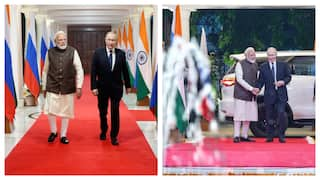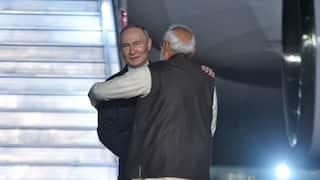Subhash Mukherjee — Architect Of India's First Test Tube Baby, His Tragic Death, And Late Recognition
Subhash Mukherjee was an Indian scientist and physician who used in-vitro fertilisation (IVF) to become the architect of India's first and the world's second test tube baby.

Subhash Mukherjee was an Indian scientist and physician who used in-vitro fertilisation (IVF) to become the architect of India's first and the world's second test tube baby.
Mukherjee created history in collaboration with Sunit Mukherji, a cryobiologist, and Dr Saroj Kanti Bhattacharya, a gynaecologist.
Mukherjee became the first physician in India, and second in the world after British physicians Patrick Steptoe and Robert Edwards to perform IVF in India. This resulted in a test tube baby 'Durga' (Kanupriya Agarwal).
Mukherjee's method of combining IVF and cryopreservation of human embryos is the currently preferred technique of medically assisted reproduction, according to historyindia.com.
Mukherjee was born in 1931 in Hazaribagh, Bihar and Orissa Province. He obtained his bachelor's degree in Physiology from University of Calcutta, and completed his MBBS from the Calcutta National Medical College.
Mukherjee obtained a PhD in 'Reproductive Physiology' from University of Calcutta. In 1967, he earned his second PhD from the University of Edinburgh in 'Reproductive Endocrinology'.
Mukherjee worked as a Professor of Physiology at NRS Medical College, Kolkata, from 1968 to 1975.
ALSO READ: Bose-Einstein Condensate, Nuclear Power Programme, Simputer – Breakthroughs In Science By Indians
Durga was born on October 3, 1978, just 67 days after the first IVF baby in the United Kingdom. However, after this feat, Mukherjee faced social ostracisation and insult from the then West Bengal State government. The Indian government refused to allow him to attend international conferences.
Dr Sunit Mukherji had claimed that initially, Subhash Mukherjee did not want anybody to know what he was working on, and that the latter did not know what the outcome of the IVF experiment would be, according to a report published by The Times of India.
A government panel was formed to examine Sunit Mukherji's claims. The committee ruled against Subhash Mukherjee, and insulted him.
Mukherjee could no longer bear the humiliation he was subject to, and committed suicide in his Calcutta residence on June 19, 1981.
ALSO READ: Vikram Sarabhai — ISRO Founder Who Was The Father Of Indian Space Programme And Much More
Subhash Mukherjee’s Late Recognition
Indian reproductive biologist TC Anand Kumar was behind the second scientifically documented test tube baby in India. In August 1986, Harsha Chawda, India's first official test tube baby, was born, and Anand was officially credited as the scientist who created the first test tube baby in India.
However, Anand checked Mukherjee's handwritten notes and research papers and became convinced about who deserved the credit. After this, Anand delivered the Subhas Mukherjee Memorial Oration at the third National Congress on Assisted Reproductive Technology and Advances in Infertility Management held in Kolkata on February 8, 1997, and published an article titled "Architect of India's first test tube baby: Dr Subhas Mukherjee. Due to Anand's efforts, the Indian Council of Medical Research eventually recognised Mukherjee's work.
The 1990 film 'Ek Doctor Ki Maut' is based on the life of Dr Subhash Mukherjee.
ALSO READ: Rabindranath Tagore, CV Raman, Har Gobind Khorana — Indian Nobel Laureates And Their Achievements
Check out below Health Tools-
Calculate Your Body Mass Index ( BMI )







































